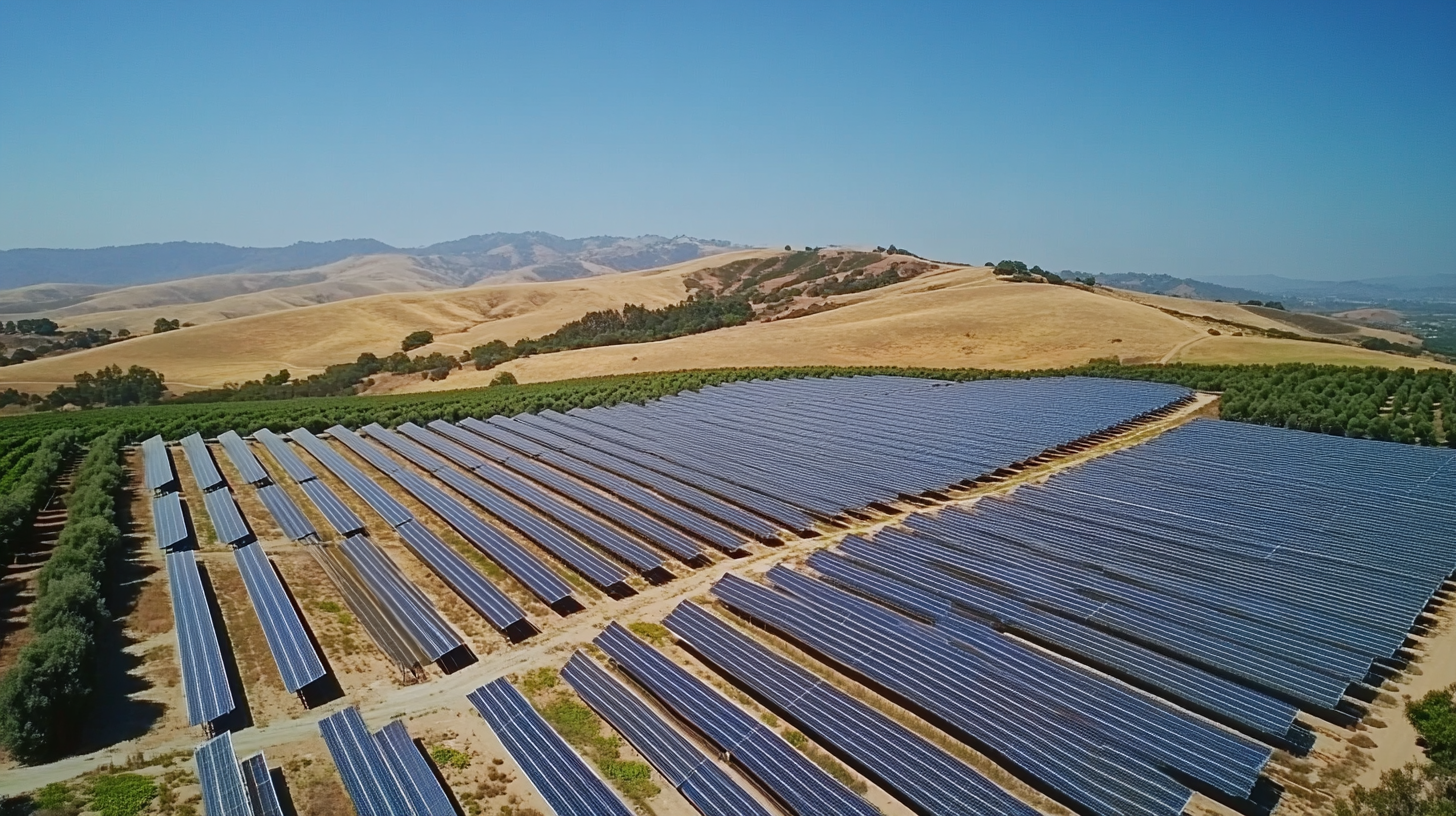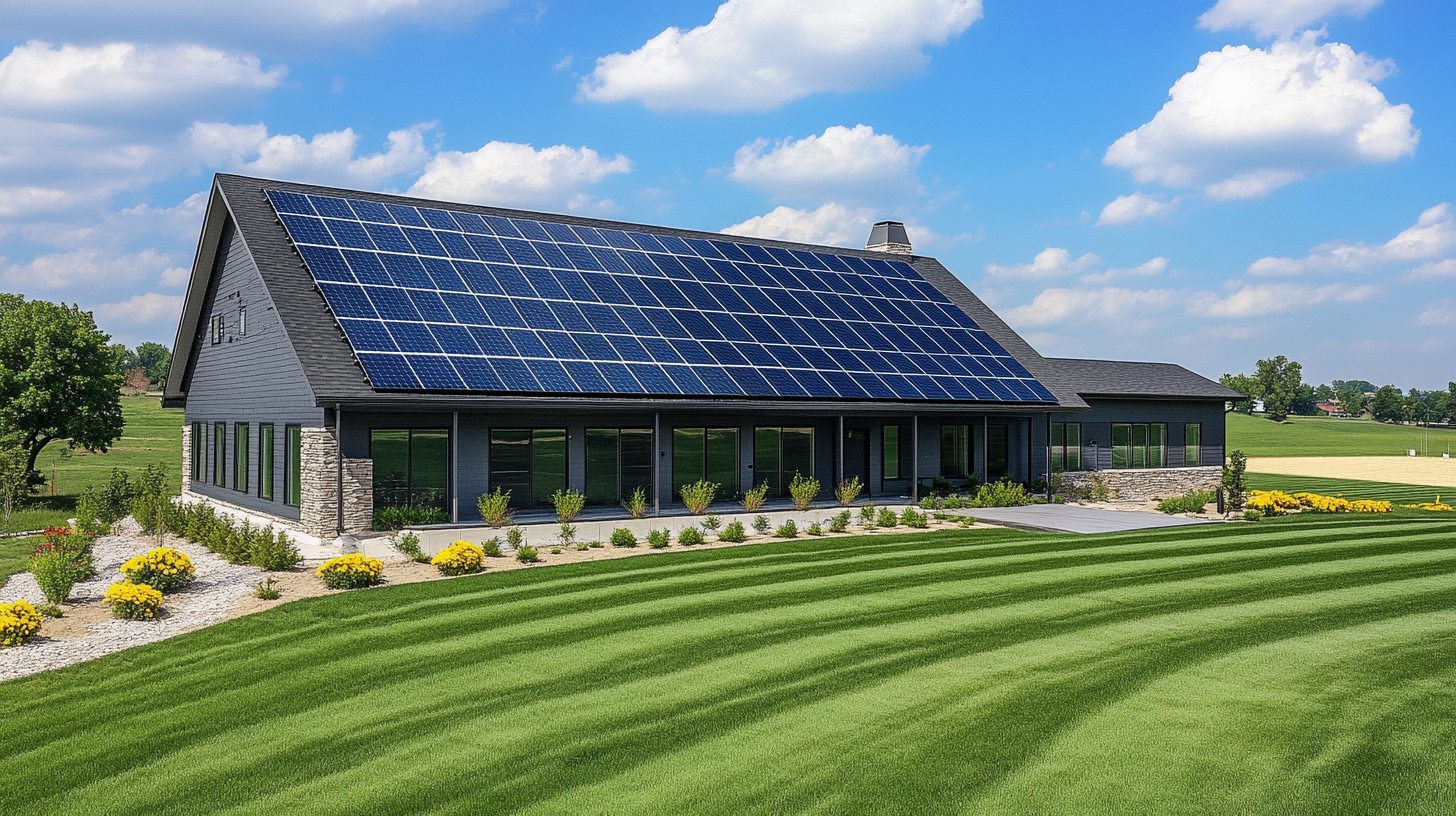Innovative Solar Power Systems Revolutionizing Global Energy Solutions
The global energy landscape is undergoing a transformative shift, driven by the need for sustainable solutions to combat climate change and energy scarcity. Among these solutions, Solar Power Systems have emerged as a leading force, with the International Energy Agency (IEA) projecting a remarkable growth trajectory. By 2025, solar energy could contribute up to 30% of global electricity, a significant leap from just 10% today. This surge in adoption is fueled by technological advancements, cost reductions, and supportive government policies that encourage renewable energy investments.
Innovative Solar Power Systems are not just enhancing energy access in developed countries; they are also becoming vital in emerging economies where traditional energy infrastructures are lacking. According to BloombergNEF, investment in solar energy could exceed $4 trillion by 2040, illustrating the technology's potential to revolutionize energy systems worldwide. As countries strive to meet their renewable energy targets, the role of solar power will be crucial in fostering economic growth, improving energy security, and reducing carbon emissions on a global scale.

Emerging Technologies in Solar Power: Transforming Energy Generation
The advent of emerging technologies in solar power is transforming energy generation and reshaping the global energy landscape. As reported by the International Energy Agency (IEA), solar energy capacity has increased dramatically, reaching over 800 gigawatts globally in 2020 and projected to double by 2025. This rapid growth reflects advancements in photovoltaic (PV) technology, energy storage solutions, and innovative system designs, making solar power a more feasible option for a larger segment of the population. One of the most significant innovations in solar technology is the development of bifacial solar panels, which capture sunlight from both sides, allowing for increased energy production. According to the National Renewable Energy Laboratory (NREL), bifacial panels can boost energy generation by up to 20% compared to traditional monofacial panels, resulting in greater efficiency and lower costs per kilowatt-hour. Coupled with the decreasing prices of solar modules—down nearly 90% since 2010—these advancements are making solar energy more accessible and affordable. Another promising trend is the integration of solar power with battery storage systems. A report from Bloomberg New Energy Finance (BNEF) indicates that the global battery storage market is expected to reach 1,000 gigawatt-hours by 2040, driven by the necessity to store excess solar energy for evening and nighttime use. This synergy not only enhances the reliability of solar energy but also facilitates its widespread adoption in residential and commercial applications, paving the way for a more resilient energy grid and reduced reliance on fossil fuels. As these technologies continue to evolve, solar power stands at the forefront of a sustainable energy future, promising to meet the growing global demand for clean, reliable energy while contributing to climate change mitigation efforts.

The Role of Energy Storage in Enhancing Solar Power Efficiency
Energy storage plays a crucial role in transforming the dynamics of solar power efficiency, positioning it as a key player in the global energy landscape. The intermittent nature of solar energy, characterized by fluctuating sunlight availability, poses a significant challenge for its consistent use. This is where advanced energy storage systems come into play, acting as a bridge that maximizes the utility of solar power. By capturing excess energy generated during peak sunlight hours, these systems ensure that solar energy can be harnessed and utilized even when the sun is not shining.
Batteries, particularly lithium-ion technologies, have become increasingly popular for energy storage due to their capacity for high efficiency and long cycle life. Innovations in energy storage not only increase the reliability of solar systems but also enhance their economic appeal. Homeowners and businesses can store solar power to use during peak demand times, reducing reliance on the grid and lowering energy costs. Furthermore, large-scale storage solutions are enabling utility companies to integrate renewable energy sources more effectively, facilitating a smoother transition to a sustainable energy portfolio.
As energy storage technology continues to evolve, the synergy between solar power and storage systems is set to revolutionize energy consumption across the globe. This evolution underscores a commitment to sustainability and energy independence, paving the way for a brighter and greener future where renewable sources play a dominant role in meeting our energy needs. The potential for energy storage in solar power systems is immense, making it an integral component of modern energy solutions.

Case Studies of Successful Solar Power Implementations Worldwide
The global shift towards renewable energy sources has led to remarkable advancements in solar power systems. Numerous case studies highlight successful implementations that not only showcase the technology's potential but also provide a blueprint for future energy solutions. For instance, Germany's Energiewende initiative has positioned it as a leader in solar capacity, boasting an impressive 58.9 GW of installed solar power by the end of 2020. This transition has resulted in renewables accounting for 42% of the country's energy consumption, demonstrating that substantial shifts are indeed achievable.
Another notable example is the case of India, where the National Solar Mission aims to achieve 100 GW of solar power capacity by 2022. As of 2021, India had already installed 40 GW, with extensive projects like the Bhadla Solar Park in Rajasthan, which is now one of the largest solar power plants in the world. This facility alone generates around 2,245 MW, illustrating how large-scale solar installations can significantly contribute to energy needs while reducing reliance on fossil fuels.
In 2020, the U.S. also saw impressive growth in solar energy, with approximately 19.9 GW of new solar capacity added, bringing the total to around 97.2 GW. States like California lead the charge, utilizing innovative solar technologies to power millions of homes and businesses. These success stories underline the vast potential of solar energy and its critical role in reshaping global energy solutions amid an increasing urgency to combat climate change.

Innovative Financing Models for Solar Energy Projects
The solar energy landscape is undergoing a transformative shift, driven not just by technological advancements but also by innovative financing models that enable projects to flourish. Traditional funding methods often limit the accessibility of solar energy solutions, creating barriers for both developers and end-users. However, new financial approaches are breaking down these walls, allowing for greater participation in renewable energy projects across the globe.
One prominent financing model gaining traction is the Power Purchase Agreement (PPA), which allows businesses and homeowners to install solar systems with little to no upfront costs. Under this arrangement, a third-party investor installs the solar panels and sells the generated electricity back to the consumer at a predetermined rate. This model shifts the financial burden away from the consumer, making solar energy more accessible and attractive, particularly in regions where capital is scarce.
Another innovative strategy is the use of crowdfunding platforms to finance solar projects. By pooling resources from numerous small investors, these platforms democratize the investment process, enabling communities to finance local solar initiatives. This approach not only fosters a sense of ownership among community members but also generates funds for projects that might otherwise struggle to secure traditional financing.
As these financing models continue to evolve and gain popularity, they represent a crucial step in the global transition to renewable energy. By making solar power more affordable and approachable, they are empowering a broader range of stakeholders to participate in the clean energy revolution, thereby accelerating the progress toward a sustainable future.
The Future of Solar Power: Trends and Predictions for Sustainable Energy
The landscape of solar power is undergoing a profound transformation, driven by advancements in technology and an increasing demand for sustainable energy solutions. According to the International Energy Agency (IEA), solar power capacity is expected to grow by over 600 gigawatts (GW) annually by 2025, solidifying its position as a key player in the global energy mix. This rapid growth is fueled by innovative solar technologies, such as bifacial solar panels and solar tracking systems, which enhance energy efficiency and output.
Furthermore, the integration of energy storage solutions is crucial for addressing the intermittency issues associated with solar energy. The latest reports from BloombergNEF indicate that the global energy storage market is projected to reach 1,000 GW by 2040, with lithium-ion batteries leading the way. This development not only supports the reliability of solar power but also opens new avenues for grid resilience and energy management. The synergy between solar generation and energy storage is paving the way for decentralized energy systems that empower consumers and promote energy independence.
As we look toward the future, it's clear that policy frameworks and investment in renewable technologies will play pivotal roles in shaping solar power trends. The global commitment to reducing carbon emissions, as outlined in the Paris Agreement, encourages governments to invest in renewable energy infrastructure. This shift is anticipated to catalyze further advancements in solar technology, making solar energy more accessible and affordable for all. The future of solar power looks bright, reflecting the collective ambition for a sustainable energy landscape.


